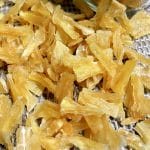How to Dehydrate Pineapple – Fresh, Frozen or Canned
Want to dehydrate pineapple? Whether you want to dry fresh, canned or frozen pineapple, you’ve come to the right place!
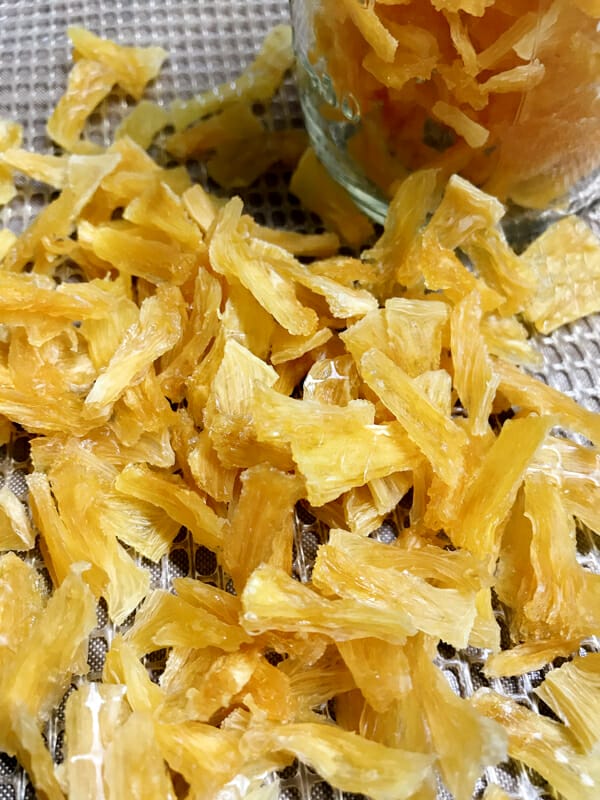
Also Read: How to Make Healthy Trail Mix, How to Store Dehydrated Food, Top Tips for Dehydrating Food
I love to dehydrate pineapple, I think dried pineapple is one of the sweetest and most flavorful of all dehydrated fruits – home dried that is. Commercially dried fruit often has added sugar and of course sulphite as a preservative.
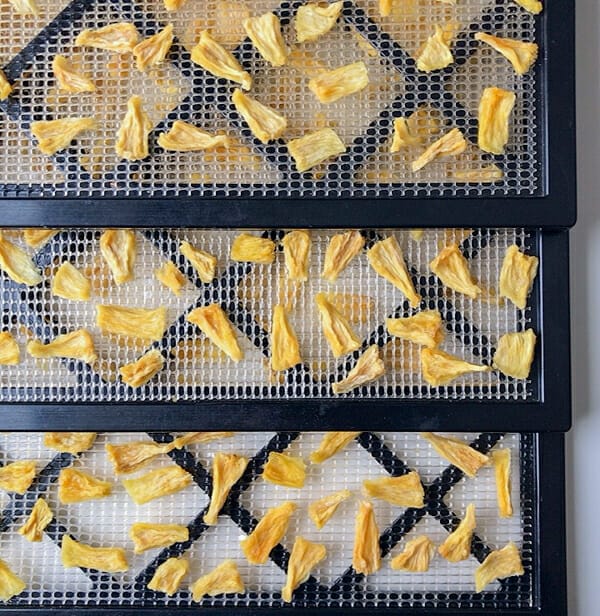
Read Here for more info on My Favorite Dehydrator, Top 12 Tips for Dehydrating Food, Storing Dehydrated Food
How to Dehydrate Pineapple
How to Dehydrate Pineapple
Ingredients
- pineapple – fresh, frozen or canned
Instructions
- Fresh Pineapple: Peel, core and remove eyes from pineapple. Wash or brush off any debris. Cut according to shape of pieces you'd like once finished. Note: Rings, half rings or quarter rings will take longer to dry and to re-hydrate. Smaller pieces are best for adding to recipes and using on the trail. Whether you cut rings, quarter rings or pieces, cut pineapple into consistent sized pieces about 1/8-1/4 inch thick.
- Optional Pre-treatment for Fresh Pineapple: Fresh pineapple may discolor slightly when dehydrated, For most people, the discoloration is not an issue. To prevent any browning either soak cut pineapple in a lemon juice (1/4 cup) and water (4 cups) solution for 5 minutes or boil cut pineapple in a sugar (1 cup) and water (4 cups) solution for 1 minute. The second option will make pineapple sweeter and stickier.
- Canned Pineapple Pieces: Drain pineapple well. Cut pieces as necessary to ensure they are uniform size, between 1/8 to 1/4 inch thick.
- Frozen Pineapple Pieces: Thawing will allow pineapple to dry quicker, but it is optional. Remove any ice crystals and separate pieces. Cut pieces as necessary to ensure they are uniform size, between 1/8 or 1/4 inch thick.
- Place pineapple on mesh trays in single layer, not overlapping. Dehydrate at 135°F (58°C) until uniformly colored, dry, leathery and still somewhat flexible. Large pieces or rings may take 14-16 hours, canned pineapple pieces will take 12-14 hours, smaller frozen pieces will take 8-12 hours.
- Pineapple pieces, especially canned pieces or those pre-treated with a sugar solution, will stick to the drying trays. Peel off sheets while still warm from the dehydrator. Let rest on tray for 2 hours to ensure pieces cool thoroughly.
- Once cooled totally and completely, place in an airtight container (glass jar is best). To condition the fruit and ensure it is absolutely dry throughout, watch and shake jar for next 7 days. If the fruit softens, clumps together or if there is any sign of moisture on sides of jar – return to dehydrator. If all is good, store for a year or more.
Video
Notes
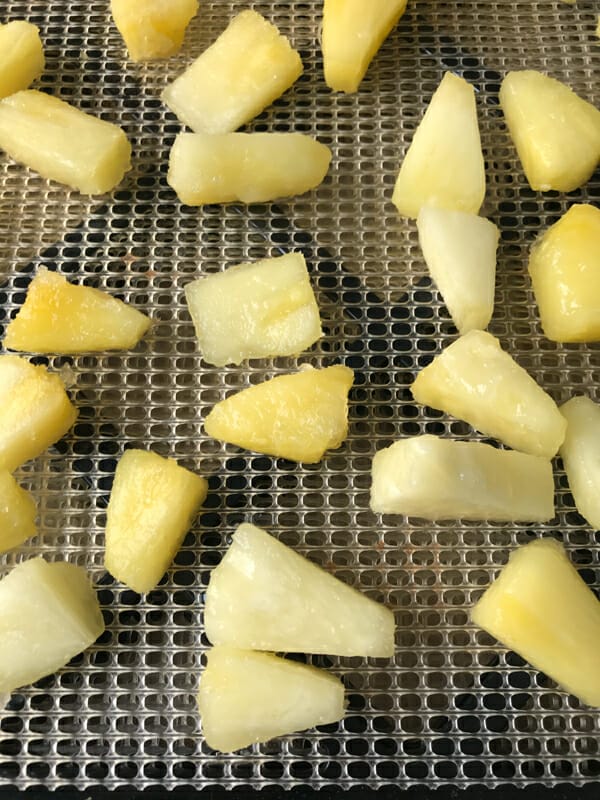
Which is Better to Use Fresh, Frozen or Canned Pineapple?
It all depends on you and what’s available. Here’s a quick look at what I think are the pros and cons of each.
Fresh Pineapples
In North America, the best time of year to get great tasting pineapple is April to June (Hawaiian pineapple), late December and August (Caribbean pineapple). During these peak times, you can often find great tasting fresh pineapple on sale – perfect for dehydrating!
Pros – great flavor, can cut it to whatever shape you prefer, can get good deals
Cons – prep takes more time, possibility of slight discoloration when dried
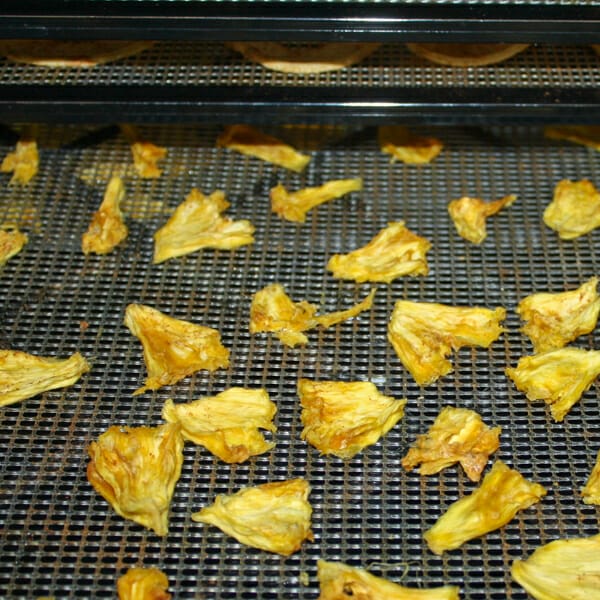
Dried fresh pineapple may look slightly faded with some browning. Most people will barely notice. If you are concerned about this, here are two pre-treatment options for fresh pineapple:
1. Soak cut pineapple in a lemon juice (1/4 cup) and water (4 cups) solution for 5 minutes.
2. Boil cut pineapple in a sugar (1 cup) and water (4 cups) solution for 1 minute. The second option will make pineapple sweeter and stickier.
Canned Pineapples
Unless you really just want tiny pieces of pineapple, I do not recommend using crushed canned pineapple. Tid bits, pieces or chunks are best.
Pros – sweet flavor, great color, easy to use
Cons – can be a little more sticky, too sweet
Frozen Pineapples
Pros – easy to use, good color and flavor
Cons – most expensive
Regardless of which type of pineapple you use, the key to good results is having uniform sized piece.
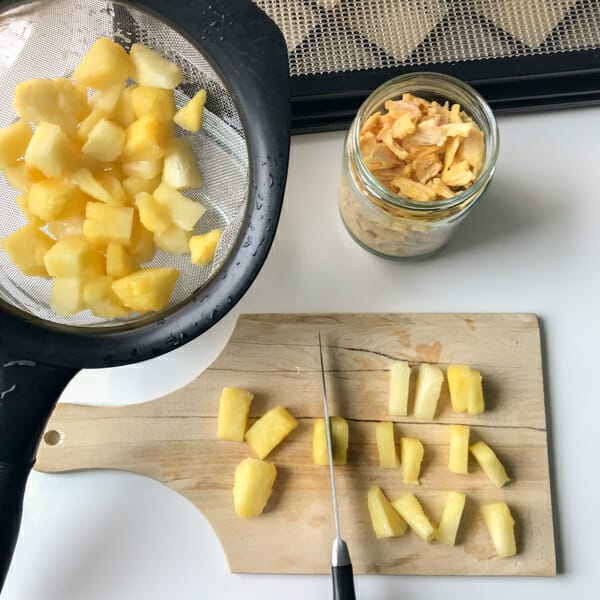
How to Condition & Store Dried Pineapple
Dried pineapple should be stored in airtight containers in a dark, cool, room. I keep mine in a glass jar in my basement pantry.
The National Center for Home Food Preservation recommends properly conditioning fruit before storing.
“When the fruit is taken from the dehydrator, the remaining moisture may not be distributed equally among the pieces because of their size or their location in the dehydrator. Conditioning is the process used to equalize the moisture. To condition the fruit, take the dried fruit that has cooled and pack it loosely in plastic or glass jars. Seal the containers and let them stand for 7 to 10 days. The excess moisture in some pieces will be absorbed by the drier pieces. Shake the jars daily to separate the pieces and check the moisture condensation. If condensation develops in the jar, return the fruit to the dehydrator for more drying. After conditioning, package and store the fruit as described above.”
Removing air by vacuum sealing or using oxygen absorbing packs will improve length of storage, but it’s always best to use preserved food, including dried pineapple, within 1 year. Yes, it will be safe to eat much longer than this, but quality will start to deteriorate.
Enjoy your dried food, don’t just store it!
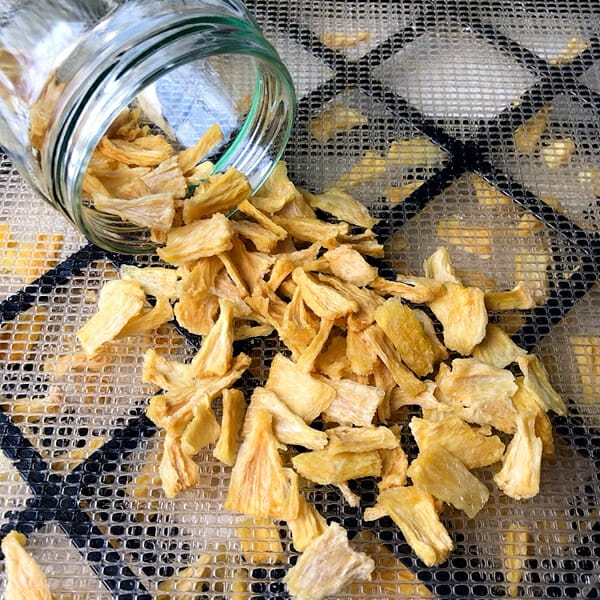
How to Re-hydrate Dried Pineapple
You can eat dried pineapple without re-hydrating. It’s a delicious, sweet chewy snack. But you can also use it in many other ways, some of which require re-hydrating it. Here’s how.
Place pineapple in bowl and cover with boiling water. Let rest for 10-15 minutes. Drain any remaining liquid.
Fun tip: Try re-hydrating with different liquids like fruit juice or alcohol. If you have time to let the pineapple re-hydrate for 30-45 minutes, use cold liquids. For special occasions try using vodka, gin or rum. The pineapple will plump up nicely (yes it will contain alcohol) and the leftover liquid will make a fine cocktail.
How to Use Dried Pineapple
- Eat as is. Dried pineapple pieces make a flavorful, chewy snack on their own just as they are.
- Add to trail mix.
- Soak and add to fruit salad or salsa – you can add any extra liquid or drain it.
- Add to breakfast meals like oatmeal or porridge. If making it at home, soak the pineapple first. If using it on the trail, add the dried pieces to the homemade instant oatmeal.
- Add to puddings and desserts. We like adding it to Chia Seed pudding. We add dry pieces, add a little extra water and let it rehydrate with the rest of the pudding.
- Soak, drain and add softened pineapple pieces to baking – mmm, pineapple carrot muffins!
- Use in savory recipes where pineapple adds a nice sweetness eg. stir fries, sweet and sour sauces, curries, teriyaki chicken, etc. At home, soak the pineapple first. On the trail, add it to the rest of the ingredients and follow the general instructions.
- Add to to herbal tea blends for a sweet tropical flavor.
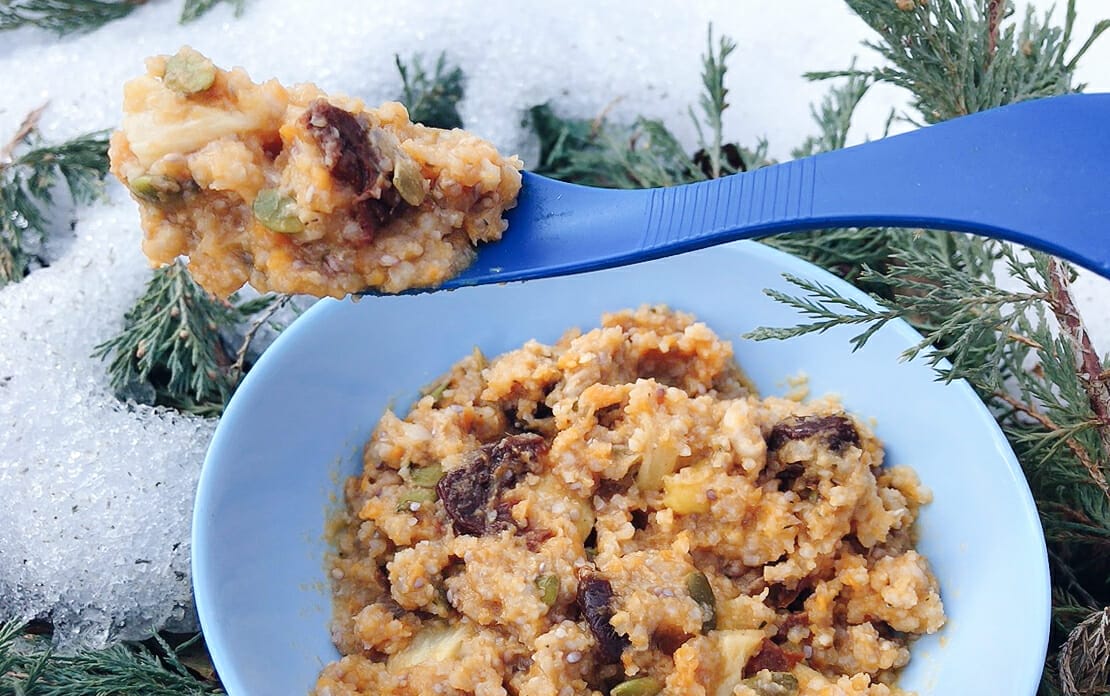
Getty Stewart is a Professional Home Economist, speaker, frequent media guest and writer dedicated to putting good food on tables and agendas. She is the author of several recipe books on enjoying and preserving fruit, Founder of Fruit Share, a mom and veggie gardener. Sign up to get articles by Getty delivered to your inbox. You’ll get recipes, practical tips and great food information like this.
Getty Stewart is a participant in the Amazon Services LLC Associates Program, an affiliate advertising program designed to provide a means for sites to earn advertising fees by advertising and linking to Amazon.com.


